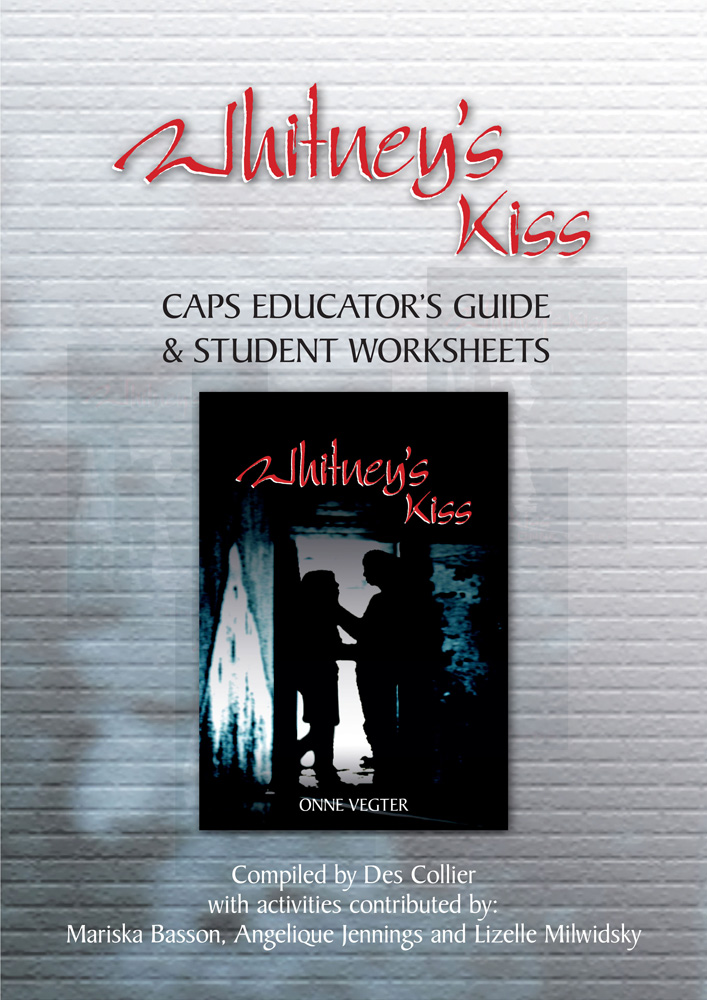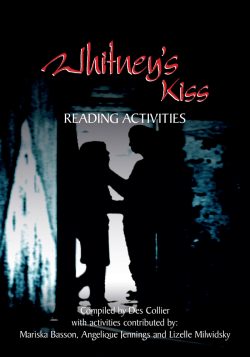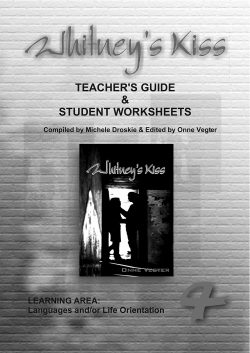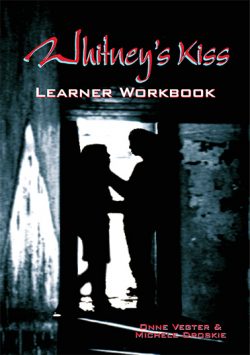Description
This Educator’s Guide is intended to provide resources and support for the Reading Activities recommended for the study and enjoyment of the novel.
The Reading Activities are available in a separate book. They are set out under the respective Chapter headings to which they apply and are numbered accordingly, using a decimal numbering system. So the numbers of all the activities for Chapter 1 begin with the numeral 1. The first, second and third activities of the chapter are numbered 1.1; 1.2; 1.3 respectively. The first activity for Chapter 2 is numbered 2.1 and so forth.
The activities are organised under the CAPS Skills Areas as subheadings according to the type of activity that is suggested. So an activity that relates to a specific aspect of the novel is placed under Read and View. Creative writing activities that relate to issues in the novel are placed under Write and Present, activities that allow learners to review the aspects and issues that arise during lessons are placed under a section called Review and Reflect. Finally, the organisation of the activities promotes the reading process of prereading, during reading and postreading as recommended by CAPS. All of the activities are captured on two tables for your easy reference according to Chapter and Aspects of the novel. Please see these tables on Page 6 – Page 30.
This Educator’s Guide consists of four main sections:
• CAPS Approach and Presentation
• Activity Memoranda
• Additional Information
• Photocopyable Activity Sheets
The layout of Activity Memoranda and Activity Sheets in their respective sections of the Guide follows the grouping and numbering system of the Reading Activities.
The Memoranda are all set out under the Chapter headings to which they apply and are numbered using the same decimal numbering system as the Reading Activities. The Guide provides a memorandum with answers, presentation tips and ideas for every reading activity. The Activity Sheets in the final section of the Guide are all numbered according to the activity to which they apply. So Activity Sheet 7.4 is meant to be used for Activity 4 in Chapter 7. Activity Sheets are provided for more extended activities that require extra material and explanation. So, while the activity sheets are arranged in sequence, there is no need for an activity sheet for every activity.
The chapters of the novel have been grouped loosely in the Guide as follows:
• Chapters 1 – 3
• Chapters 4 – 6
• Chapters 7 – 8
• Chapters 9 – 12
Each of the Chapter Sections begins with a short summary of the Plot, Main Characters and Main Themes, as they develop in those chapters, for your convenience.
Thereafter Activity Memoranda for each Chapter follow and are organised under the Skills Areas:
• Read and Write
• Listen and Speak
• Write and Present
• Language Use
• Review and Reflect
When designing and preparing your lessons, select the appropriate activities for the Chapter or section of the book with which you are working. Use the plot, main character and theme summaries to help you.
Then, where appropriate, access the relevant Activity Sheets that are ready to be photocopied from the last section of the Guide.
The Activity Sheets and Activity Memoranda also contain tips and ideas on how to present and address the aspects and issues of the novel in a way that will keep your learners stimulated and interested.
Select your activities according to the time you have allocated to study the novel. It is not necessary to do all of the activities and it is not necessary to do them in order. Select and adapt the activities to suit your approach and to meet the needs of your learners. For example, you might wish to adapt some of the reading comprehensions to use as listening comprehensions. Some of the individual activities can also be done as group activities and vice versa. Some of the activities have mark allocations and rating codes that you might wish to include in your assessment programme.
Please note that the Educator’s Guide is not meant to be prescriptive nor exhaustive. It is designed to help you with some ideas on how you can use Whitney’s Kiss in your class, and to put some useful resources in your hand so that you can focus your energy on engaging with your learners. We trust you will find it helpful.
CAPS Approach and Presentation
The Reading Activities for Whitney’s Kiss have been developed according to the frameworks and guidelines of the CAPS Curriculum and in particular the following prerequisite:
“All cultures, and most people, live lives imbued with stories…. Narratives (novel, short story and folklore) need to be read, discussed, and enjoyed. Whatever the teacher does in the classroom, the sheer pleasure of engaging in a good story must remain paramount.”
The teaching of literature should focus on teaching for comprehension and will include the reading process strategies (prereading, reading and postreading). The main reason for reading literature in the classroom is to develop in learners a sensitivity to a special use of language that is more refined, literary, figurative, symbolic, and deeply meaningful than much of what else they may read. While most literary texts are forms of entertainment, amusement, or revelation, serious writers create novels, plays and poems because they have ideas, thoughts and issues; principles, ideologies and beliefs that they most want to share with or reveal to their prospective readers. Their imaginative use of language is an added method of revealing, reinforcing, and highlighting their ideas.
Creative writing should be closely attached to the study of any literary text. Writing activities that demand a close understanding of the text being read can prove very helpful in reaching more creative levels of appreciation on the part of the learners.
This youth novel offers 12 – 14 year-olds the chance to embark on a journey with Whitney and her friends in using English Language to explore and develop personal identity, values and viewpoints. The reading activities will encourage them to build positive, life-affirming relationships by making constructive, edifying choices in dealing with the issues, challenges and temptations faced by youth in contemporary African society.
In using the theme approach, learners can look at themes such as true love, values, trust, honesty, etc. and relate them to events in real life situations. They can make judgements about the characters’ actions and comment on the theme.
The following aspects are covered in Grade 7 at appropriate and progressive levels of complexity:
• The Reading Process
• Reading Purpose
• Elements of a Novel
We have designed the activities to follow a general pattern, with Listening and Speaking playing a big part throughout, as follows:
• Prereading to stimulate past experience or knowledge related to the issues in the subsequent chapter, or to share any insights from Review and Reflection.
• Reading activities to check and support understanding.
• Language-in-context activities.
• Closer reading and study of the novel genre.
• Writing and presenting own response to the novel.
• Review and reflection on the issues and learning covered in the chapters.
Each learner should have a workbook as well as a journal. The workbook will be used for all activities which could be assessed. The journal is for use during Review and Reflect and is not intended for assessment. The educator has the responsibility to ensure that learners complete the tasks and should agree with the learners on what basis the journals will be viewed.







Reviews
There are no reviews yet.